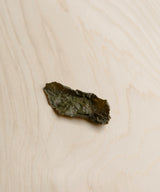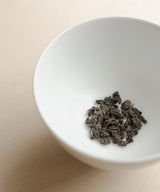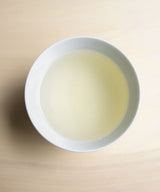Baiya Qilan 2019 Vintage
This Baiya Qilan is from our vintage 2019 Spring Harvest.
白芽奇兰2019春
Harvest
Spring 2019
Origin
Zhangzhou, Fujian
It is said that, sometime during the Ming Dynasty, Chen Yuanhe, the grandson of the current Emperor, found a tea tree in Pinghe County, Fujian. The buds of the tea tree were such a pale green they almost appeared white and they had the same scent as orchids. Chen Yuanhe named this tree Baiya Qilan 白芽奇兰 . Its name has four characters: the first character, 白, translate into “white,” 芽 means “bud,” 奇 indicates “special” or “unique” and 兰 is the character for “orchid.” Therefore the name translates directly as “white bud special orchid;” it is referred to as “white bud Qilan”
Baiya Qilan is an oolong from deep within the mountains of Fujian. Its remote origin has meant that its cultivation and crafting has not been influenced by popular tastes that influence present day tea production. This tea maintains traditional oolong craftsmanship, where it is still oxidized naturally in several rounds of yaoqing, and is slow roasted over lychee charcoal.
The climate of southern Fujian is hot and humid. It’s highest peak, Daqin Mountain, stands at over 5,000 ft elevation. Pengxi Village, the origin of Baiya Qilan, is located at the western foothills of the towering Daqin mountain. The mountains of Pengxi are also high elevation; the air that surrounds them is nearly always foggy. Clear streams run through Pengxi, the soil is fertile and nutritious, and the hills are covered in bamboo and lush forest.
Pengxi Village is perhaps best known for its honey pomelo. During the Ming Dynasty, in the 1700’s, honey pomelo from Pengxi was selected as a Tribute Article for the Emperor. Over the last century, many of Pengxi’s tea farms have actually been converted to far more profitable pomelo farms. Baiya Qilan, the beautiful tea from Pengxi, is really a hidden treasure of this village; we could say that it continues to grow, but only in the shadow of the pomelo.
This Baiya Qilan is crafted by tea veteran Chen Huoping. A native of Pengxi Village, Chen started his foray into tea in 1966, when he was still very young. He worked for the Pengxi County Tea Company, first as a buyer, and then later in the research department. His research focused on detecting the inorganic mineral content of the soil in and around his village. Starting in 1978, and for the next twenty years, Chen cultivated 3 acres of land in Pengxi and converted it into tea farms. There he planted and studied a number of oolong varietals, including Qilan, Tieguanyin, and Buddha’s Hand. He spent his days observing the tea trees, their growth cycles in different seasons, what temperatures caused the tea trees to sprout and bud, and how many centimeters the tea leaves grew in a day. His research method kept him in close contact with the trees, his home village, and the climate they were all subjects of.
When I visited Chen at his family home in Pengxi he wanted to take me to see his highest tea gardens, which are at almost 3,000 ft elevation. On account of the heavy rain that day we never made it. There are no roads for vehicles to these tea gardens, and the hills are very steep. Even motorcycles cannot climb the hills; they move at the speed of tired horses. Those tea gardens, Chen assured me, are only ever accessible by foot. I did, however, get to visit the tea garden where this Baiya Qilan grows.
This tea comes from semi-wild tea trees that grow in a tea garden that sits at 2,200 ft elevation. Still very remote, the trees grow with minimal human intervention; no pesticides or fertilizers are used around them. The tea is crafted following traditional techniques, roasted slowly over lychee charcoal for over 30 hours. Chen explained that, as he got older, he gave up on making “uninteresting tea.” He began to make his tea by combining the traditional hand-picking of leaves, manual “yaoqing,” hand rolling, and slow charcoal roasting. When crafting tea this way the cost is much higher, and the yield is lower, but this, he says, is what makes it “interesting.”
You will agree with Chen. The results of his care and experience on this special varietal produce a very compelling oolong. The tea has a soft, floral fragrance, and spreads in the mouth as though it has thickened the water. Alongside its strong minerality it has very distinct orchid notes – these give way to a sweet, sustained aftertaste.
. . .
Brewing guide
| Tea | 4g |
| Temperature |
95 °C |
| Water | 120ml |
| Steep time | 10 - 60 sec |
| No. of infusions | 8 |






